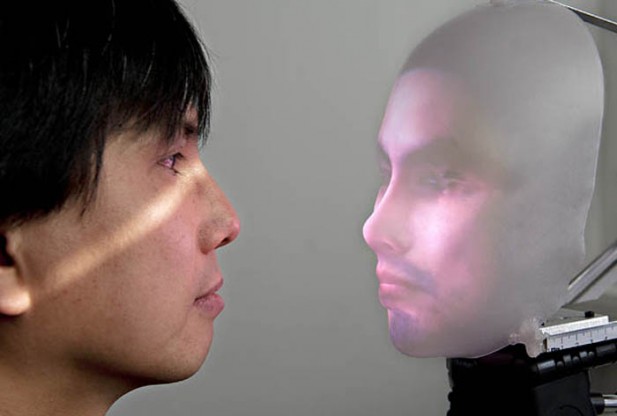
Researchers at the Technische Universitaet Muenchen (TUM) Institute for Cognitive Systems are in the process of creating a new robot that features a realistic human face and can reproduce basic dialog, according to a press release sent out by the university on Monday.
According to that media advisory, the so-called "Mask-Bot" features a number of innovations. Those include the projection of a vast array of realistic 3D faces that can be viewed from any number of angles, rather than the "cartoon-like style" utilized by other development teams.
Those faces are displayed on a transparent plastic mask, and can be changed at any time through the use of a projector that is positioned behind the mask itself, the TUM researchers said.
Furthermore, according to Popsci reporter Rebecca Boyle, Mask-Bot utilizes a "talking head animation engine" that allows it to "filter face emotions according to the emotional feel of spoken words, so the faces accurately reflect the speakers' expressions."
The technology, which the developers told Boyle could be used for video conferencing, accesses a database of facial emotions that had been previously acquired through motion-capture technology. The system is designed to select the expression which best matches the tone of the person's voice. It takes facial coordinates from each captured expression and then applied it to whichever face is currently being projected on the mask.
According to the TUM press release, Mask-Bot can already participate in simple conversations, such as explaining what a rainbow is during a recent demonstration. It is currently unable to understand much spoken language, and can only respond through a fixed programming sequence, but the creators say that it can "realistically reproduce typed via a keyboard" in both English and Japanese.
"A powerful text-to-speech system converts text to audio signals, producing a female or male voice, which can then set to quiet or loud, happy or sad, all at the touch of a button," they added.
The National Institute of Advanced Industrial Science and Technology in Japan have been collaborating with the TUM researchers on Mask-Bot's development, Boyle said.



Reader Comments
to our Newsletter